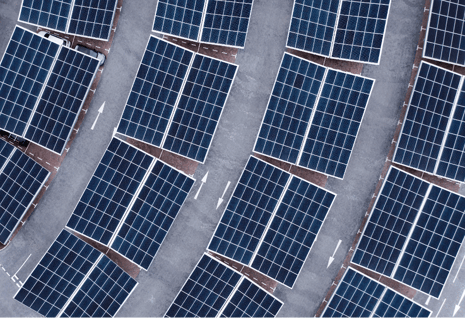
From Sun to Socket: Understanding How Solar Panels Work
In a world where sustainable energy sources are becoming increasingly important, the spotlight is shining brightly on solar power. Solar panels, also known as photovoltaic (PV) panels, are at the forefront of harnessing the sun's energy and converting it into electricity. If you've ever wondered how solar panels work, let's shed some light on the intricate process that powers our homes and businesses by answering solar energy’s most asked questions.
How Do Solar Panels Work?
Solar panels work by utilizing a phenomenon known as the photovoltaic effect. This effect occurs when photons from sunlight strike the surface of a solar panel, causing the electrons in the panel's semiconductor material to become energized. These energized electrons create an electric current, which can then be captured and converted into usable electricity.
How Do The Panels Convert The Energy They Receive?
The key to solar energy conversion lies in the composition of solar panels. Most solar panels are made up of silicon cells, which are capable of conducting electricity when exposed to sunlight. When sunlight hits these cells, it excites the electrons within them, generating an electrical current that can be harnessed for various purposes.
The operation of solar panels is a seamless process that involves several components working together harmoniously. Once the sunlight is absorbed by the solar panels, an inverter converts the direct current (DC) electricity generated by the panels into alternating current (AC) electricity, which is compatible with the electrical grid. This AC electricity can then be used to power our homes, businesses, and other electrical devices.
The mechanism behind solar panels involves intricate layers of materials that work together to convert sunlight into electricity. The top layer of tempered glass protects the cells from environmental factors while allowing sunlight to pass through. Beneath this layer are the photovoltaic cells that absorb light and generate electricity. Finally, at the back of the panel, a layer of metal conducts the generated electricity out of the panel for use.
What Are The Benefits Of Switching To Solar?
There are countless benefits of switching to solar power for your home or business. The following list just a few:
- Tax Incentives: Governments offer various incentives, such as tax credits and rebates, for those who switch to solar power, helping offset the initial cost of installation.
- Energy Security: Solar power provides a reliable source of energy that is not subject to fluctuations in utility prices or supply chain disruptions, ensuring a stable energy source for your home or business.
- Durability and Low Maintenance: Solar panels are durable and require minimal maintenance, offering a hassle-free energy solution that can last for decades.
- Job Creation: The growing solar industry creates job opportunities in installation, manufacturing, and maintenance, contributing to economic growth and employment opportunities in your community.
- Sustainable Business Practices: Adopting solar power demonstrates your commitment to sustainability, attracting environmentally conscious customers and stakeholders to your business.
- Innovation and Technology: Embracing solar power showcases your forward-thinking approach to energy management, positioning your home or business as a leader in adopting innovative technologies for a greener future.
By harnessing the power of the sun, solar panels offer a clean and renewable source of energy that helps reduce our reliance on fossil fuels and lower our carbon footprint. As technology continues to advance, so too does the effectiveness and affordability of solar power systems.
In conclusion, understanding how solar panels work is essential for grasping the potential of solar energy as a sustainable power source. By delving into concepts such as solar energy conversion, solar panels' electricity generation process, solar power operation, and the intricate mechanisms behind their functionality, we gain a deeper appreciation for the sun's role in powering our world.
So, next time you see a rooftop adorned with gleaming solar panels, remember that those panels are silently converting sunlight into usable electricity – a small but significant step towards a greener future powered by renewable energy.
Ready to start anew and take your first step on your solar journey? Contact DFW Solar Electric today to get your instant solar estimate. We're excited to help you unlock the benefits of clean, affordable solar energy with our solar panels in the Dallas-Fort Worth metroplex in 2024 and beyond.
DFW Solar Electric Service Areas
We service all of the Dallas-Fort Worth metroplex, including Frisco, Allen, Plano, Southlake, McKinney, Colleyville, Flower Mound, Lewisville, Keller, and Coppell.
About DFW Solar Electric
With more than 30,000 solar panels installed to date, DFW Solar Electric has the experience and professionalism to provide your home with the best, most efficient possible solar power system. We use only products from reputable and time-trusted suppliers, and our installations are guaranteed to last with industry-standard maintenance.
While there are many solar installers to choose from, selecting one who knows the area and already has a proven track record of excellence can simplify the process and ensure you get the best return on your investment.
Comments